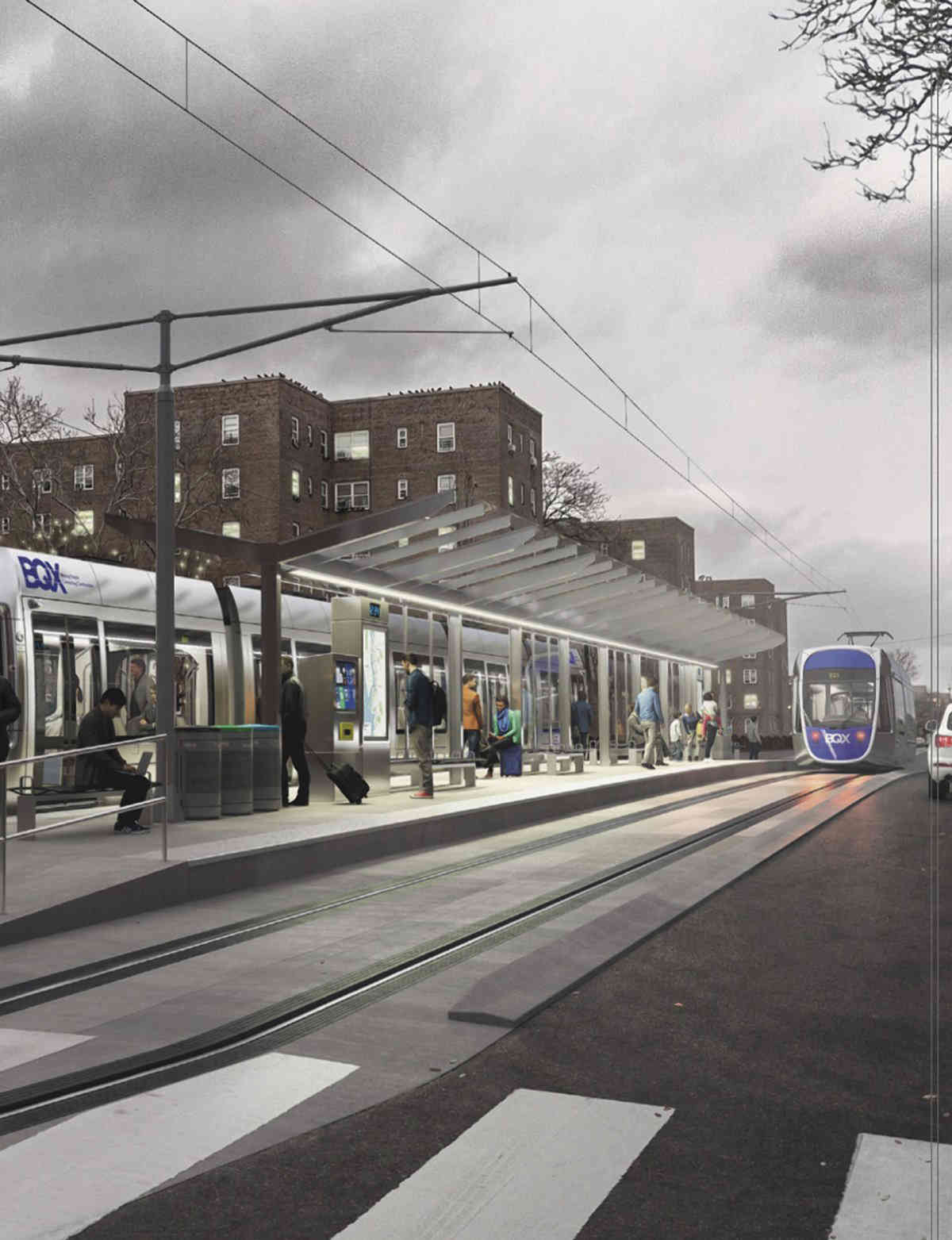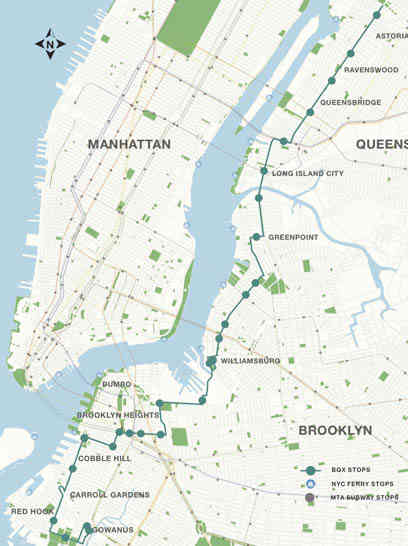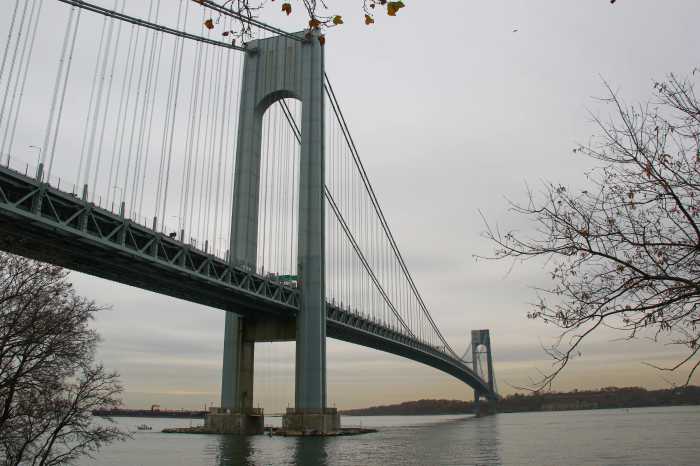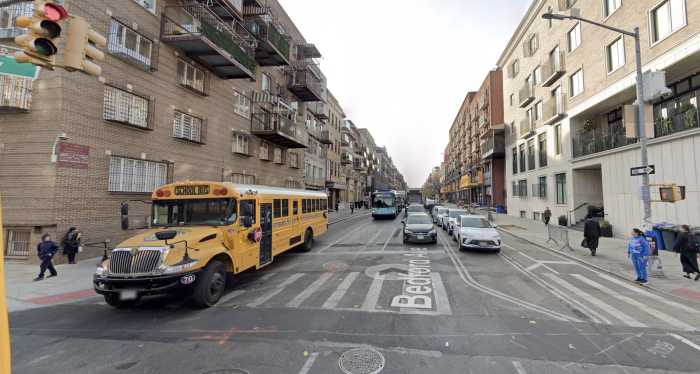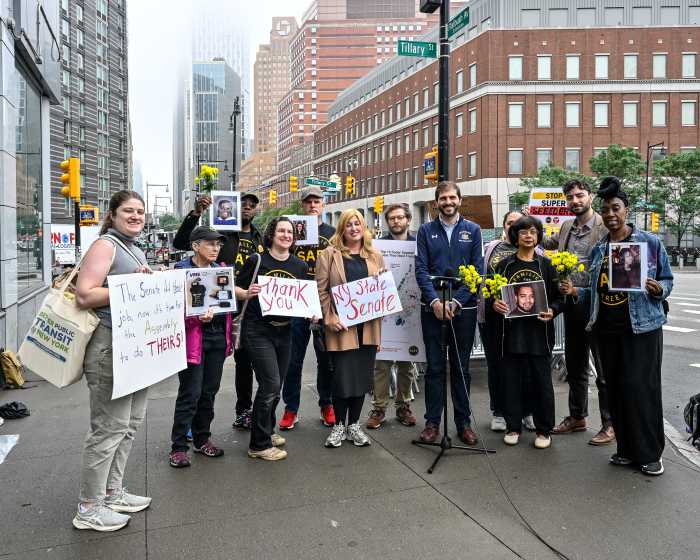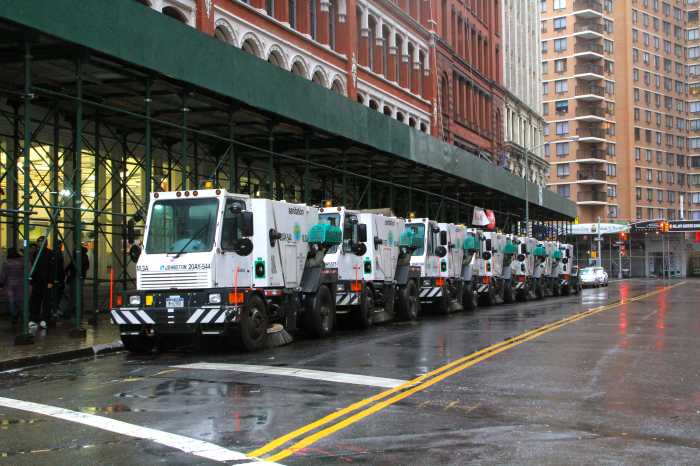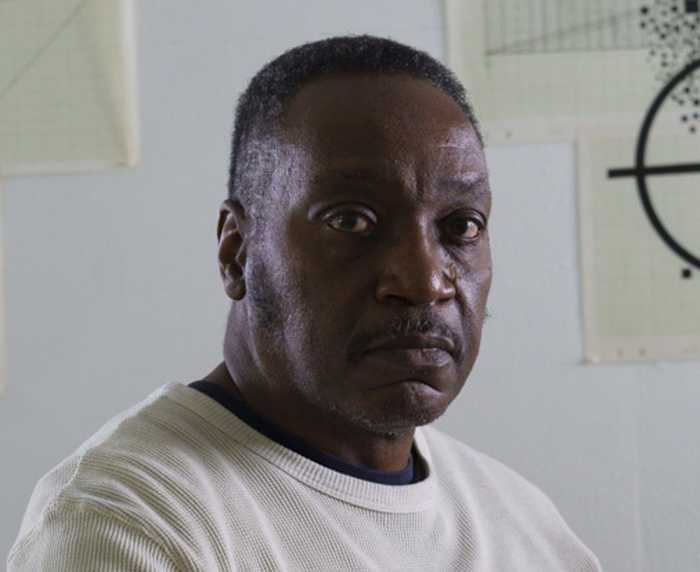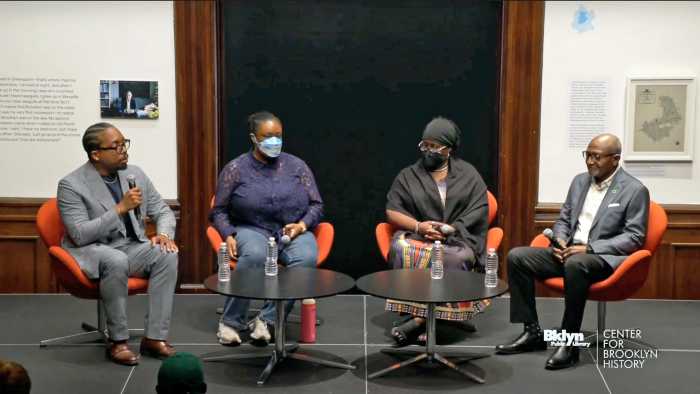Mayor DeBlasio shouldn’t count on getting the federal cash he needs to roll out his beloved Brooklyn–Queens waterfront trolley line — which he on Thursday said will now cost more money, include less stops, and take years longer to build — the city’s lone Republican congressman said.
“We have many more viable projects that need federal funding — if I was the mayor, I wouldn’t be holding my breath,” said Bay Ridge Rep. Dan Donovan, a pal of DeBlasio critic President Trump, who would need to sign off on any future federal budget. “Trying to kick the costs to the federal government appears to be a last-ditch attempt to revive a dying project that just doesn’t make sense.”
Along with the commander in chief, Donovan and his fellow House Republicans, as well as their counterparts in the Senate, would dictate spending in a future budget given their majority. But Hizzoner’s Brooklyn Queens Connector streetcar isn’t likely to get federal green even if a blue wave hits Congress this November, according to a Democratic Williamsburg pol, who noted how Trump has yet to fulfill his promise of passing a massive infrastructure bill even with his party in control.
“Securing federal funding is much harder under this administration, which has repeatedly promised an infrastructure package, but we haven’t seen it yet,” said Rep. Carolyn Maloney.
DeBlasio first announced plans for the Brooklyn Queens Connector streetcar in 2016, claiming that it’s then $2.5-billion price tag would be funded entirely by tax revenue generated by increased development along its original 14-mile track, after a consortium of builders put together an initial proposal for the scheme.
But last week the city’s Economic Development Corporation revealed the project’s cost shot up to $2.73 billion, and that local officials want the Feds to kick-in more than $1 billion towards the trolley after a much-anticipated study of the financial model revealed a surge in construction alone won’t fully subsidize it.
The new price tag wasn’t the only change to the light-rail plan following the study’s release. The city announced its original 14-mile track would shrink to 11 miles, skipping Dumbo entirely, and terminating in Red Hook instead of Sunset Park — likely a relief to the neighborhood’s Councilman Carlos Menchaca, who panned the project due to fears it would accelerate displacement in the already gentrifying enclave.
Construction of the infrastructure is now slated to begin in 2024 — the year it was initially meant to be up-and-running — and wrap in 2029, meaning work would almost certainly overlap with looming repairs to the Brooklyn–Queens Expressway’s triple cantilever, which are set to take place between 2021 and 2026 and alone will cause massive headaches for commuters.
And new renderings of the streetcar — whose new route to Queens through Red Hook, Gowanus, Brooklyn Heights, Cobble Hill, Downtown, Williamsburg, and Greenpoint often mirrors that of the below-ground G train — show it may require overhead cables to help power it, after previous iterations depicted a rail-only system. But mayoral spokeswoman Jane Meyer said the city has “always explored” the overhead-cable option.
Maloney, who helped secure $670 million to replace the old Kosciuszko Bridge and $700 million to fix the L train, said she won’t be pushing for cash for the trolley until she gets more details that convince her of its benefit.
“Clearly people living in the portions of Brooklyn and Queens that I represent need more transportation alternatives, and the BQX could alleviate some of the concerns in transportation deserts, but as with everything, the devil is in the details,” she said. “I would need more information about the traffic, neighborhood and environmental impacts of the plan.”
And even if the city does manage to score funds from the Feds, a slew of other transit projects — including improving bus service and ensuring enough alternative-transportation options are in place before the L train’s Brooklyn–Manhattan tube closes for 15 months next April — deserve the money before the streetcar, according to a spokesman for Maloney’s Democratic colleague Rep. Nydia Velázquez, whose district includes many of the streetcar’s Brooklyn stops.
“The congresswoman is focused on addressing immediate transportation challenges, like establishing an enhanced B71 bus route that helps meet Red Hook’s transit needs and expanding alternatives for commuters affected by the L train closure,” said Alex Haurek.
The city plans to begin an environmental review for the Brooklyn Queens Connector project this winter, ahead of sending the scheme through the Uniform Land Use Review Procedure in 2020, one year before DeBlasio concludes his second term as mayor.
